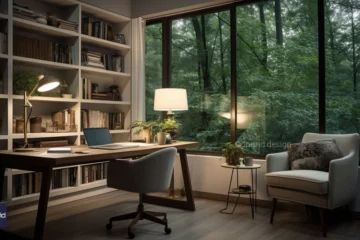Art is a captivating form of expression that transcends time and culture. From the earliest cave drawings to modern digital art, artists have always sought new ways to bring their visions to life. One of the most fascinating transformations in art is the transition from picture to painting. This article will explore the artistic techniques and tools that artists use to make this transition, offering insights into their creative processes and the evolution of art miicreative.
Understanding the Basics
Before we dive into the techniques and tools, it’s essential to understand the fundamental differences between a picture and a painting. A picture is generally a flat, two-dimensional representation of a scene or subject, captured through photography or drawing. A painting, on the other hand, is a work of art created using pigments applied to a surface, such as canvas, wood, or paper. While both mediums can capture the essence of a subject, paintings often add depth, texture, and emotion that pictures may lack.
The Artistic Techniques
1. Composition and Sketching
The first step in transforming a picture into a painting is planning the composition. This involves deciding on the arrangement of elements within the artwork to create a harmonious and balanced piece. Artists often start with a preliminary sketch, either on paper or directly on the canvas. This sketch serves as a blueprint for the painting, allowing the artist to work out proportions, perspectives, and the overall layout.
Tools: Pencils, charcoal, sketchbooks, canvas
2. Choosing the Color Palette
Color plays a crucial role in conveying mood and atmosphere in a painting. Artists select a color palette based on the subject matter, lighting, and emotional tone they wish to achieve. The choice of colors can significantly impact the viewer’s perception and interpretation of the artwork.
Tools: Color swatches, paint tubes, mixing palettes
3. Underpainting
Underpainting is an initial layer of paint applied to the canvas, serving as a base for subsequent layers. This technique helps to establish the overall tone and values of the painting. Artists often use a monochromatic or limited color palette for the underpainting, focusing on the light and dark areas to create a sense of depth and dimension.
Tools: Brushes, acrylic or oil paints, turpentine or water (for thinning)
4. Layering and Glazing
Once the underpainting is complete, artists begin to build up layers of paint, gradually adding details and refining the image. Layering allows for greater control over the final appearance of the painting, as each layer contributes to the overall texture and depth. Glazing, a technique involving thin, transparent layers of paint, can create luminous effects and enhance color richness.
Tools: Fine brushes, medium brushes, glazing medium, palette knives
5. Texturing
Texture adds a tactile quality to a painting, making it more engaging and visually interesting. Artists can create texture using various techniques, such as impasto (applying thick layers of paint), stippling (using small dots of color), and scumbling (scrubbing a dry brush over wet paint). These techniques can mimic the textures found in nature or add an abstract element to the artwork.
Tools: Palette knives, textured brushes, sponges
6. Detailing and Refining
The final stage of the painting process involves adding fine details and making any necessary adjustments. This step requires a steady hand and an eye for precision, as even the smallest changes can significantly impact the overall composition. Artists may use fine brushes, magnifying glasses, and other tools to achieve the desired level of detail.
Tools: Fine brushes, detail brushes, magnifying glass
The Evolution of Artistic Tools
Traditional Tools
For centuries, artists relied on traditional tools such as brushes, palettes, and easels to create their masterpieces. These tools have stood the test of time and remain essential in many artists’ studios today. However, the materials and techniques used have evolved, with advancements in paint formulations, canvas preparation, and brush design.
Examples of Traditional Tools:
- Brushes (bristle, sable, synthetic)
- Paints (oil, acrylic, watercolor)
- Canvas (linen, cotton, primed, unprimed)
- Palettes (wooden, glass, ceramic)
Digital Tools
In recent years, the rise of digital art has revolutionized the way artists work. Digital tools offer unparalleled flexibility and convenience, allowing artists to create, edit, and share their work with ease. Software programs such as Adobe Photoshop, Corel Painter, and Procreate provide a wide range of brushes, textures, and effects, enabling artists to experiment and push the boundaries of their creativity.
Examples of Digital Tools:
- Graphic tablets (Wacom, Huion, XP-Pen)
- Software programs (Adobe Photoshop, Corel Painter, Procreate)
- Digital brushes and textures (customizable, downloadable)
Hybrid Techniques
Many contemporary artists combine traditional and digital techniques to create unique and innovative works of art. This hybrid approach allows for the best of both worlds, blending the tactile qualities of traditional media with the versatility and efficiency of digital tools. Artists may start with a digital sketch, print it onto canvas, and then apply traditional paints and textures to create a one-of-a-kind piece.
Examples of Hybrid Techniques:
- Digital sketching followed by traditional painting
- Printing digital artwork onto canvas for further enhancement
- Combining digital and traditional textures in a single piece
The Role of Technology in Artistic Techniques
3D Printing
3D printing has opened up new possibilities for artists, allowing them to create intricate sculptures and models with precision and ease. Artists can design their creations using 3D modeling software and then bring them to life using a 3D printer. This technology has expanded the boundaries of what is possible in art, enabling the creation of complex and detailed works that would be challenging to achieve by hand.
Augmented Reality (AR)
Augmented Reality (AR) is transforming the way artists and audiences interact with art. AR allows for the overlay of digital content onto the physical world, creating immersive and interactive experiences. Artists can use AR to add dynamic elements to their paintings, such as animations or informational overlays, enhancing the viewer’s experience and engagement with the artwork.
Artificial Intelligence (AI)
Artificial Intelligence (AI) is making its mark on the art world, with AI-powered tools and algorithms capable of generating original artworks. Artists can use AI to explore new styles, compositions, and techniques, pushing the boundaries of their creativity. While AI-generated art is still a relatively new field, it holds great potential for the future of artistic innovation.
Conclusion
The journey from picture to painting is a fascinating exploration of artistic techniques and tools. Whether working with traditional media, digital tools, or a combination of both, artists continue to innovate and push the boundaries of their craft. By understanding and mastering these techniques, artists can transform simple pictures into captivating paintings that evoke emotion, tell stories, and inspire viewers.
If you’re an aspiring artist or simply curious about the creative process, consider experimenting with different techniques and tools to find what works best for you. And remember, the most important part of art is the passion and dedication you bring to it. Happy painting!




